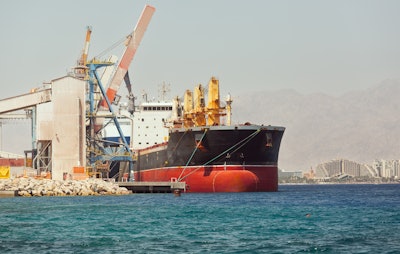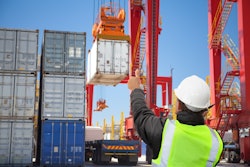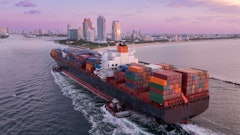
The China to Europe trade lane has witnessed significant surges, with trading spot rates soaring in key Chinese ports. The disruptions are not confined to China; leasing rates bound for Hamburg, Germany, have doubled since Jan. 1, according to the latest data from Container xChange.
“Since the beginning of the Houthi situation, the trading prices for 40-foot-high cube units in China significantly increased because there is expected tightness around equipment availability in Chinese main ports ahead of Chinese New Year because the loop around Africa soaks up capacity and delays the return of empty equipment to China,” says Christian Roeloffs, co-founder and CEO of Container xChange.
Key takeaways:
- Trading spot rates for 40-foot-high cube cargo-worthy containers have witnessed a significant surge in key Chinese ports. Noticeable week-on-week increases have been recorded in Xiamen (23%), Shekou (19%), Guangzhou (10%), Huangpu (8%), and Nansha (8%).
- Container xChange's research indicates a global impact on container trading prices, with the Top 10 locations experiencing substantial month-on-month percentage increases.
- Container leasing spot rates have mirrored the spikes observed in trading prices, especially in the China to Europe route. Rates have steadily increased, reaching notable highs. The expected continuation of disruptions indicates a prolonged period of challenges, requiring industries to adapt to structural imbalances in supply and demand.
- The longer disruptions at the Red Sea trade route pose a significant threat to various industries, including automobiles, electronics, chemicals, consumer goods, machinery, and pharmaceuticals. Delays in the supply chain could lead to production interruptions, impacting global value chains.
"We've witnessed a continuous surge in leasing rates since around August-September 2023, starting at a low of approximately $200 for a one-way move from Ningbo or Shanghai to Hamburg, often referred to as pickup charges. This escalation is primarily driven by two key factors. Firstly, the widening price gap in trading prices has played a pivotal role, and secondly, there's a notable equipment scarcity across China. As the price gap widens and equipment availability tightens, the spike has become more evident since the beginning of 2024. It's clear that the attacks in the Red Sea are not merely a passing phenomenon; they have substantial implications on the routing of container vessels, causing delays in their return trips to China. We have witnessed this surge to top at $800 for a one-way move, marking a fourfold increase," adds Roeloffs. “We do expect that after Chinese New Year, the situation will decelerate and easen up owing to the drop in demand, carriers will be able to reconfigure their network and adjust to the longer transit times around the cape of good hope and are supposed to have a structural supply demand imbalance with a significance supply overhang.”















![Pros To Know 2026 [color]](https://img.sdcexec.com/mindful/acbm/workspaces/default/uploads/2025/08/prostoknow-2026-color.mduFvhpgMk.png?ar=16%3A9&auto=format%2Ccompress&bg=fff&fill-color=fff&fit=fill&h=135&q=70&w=240)


